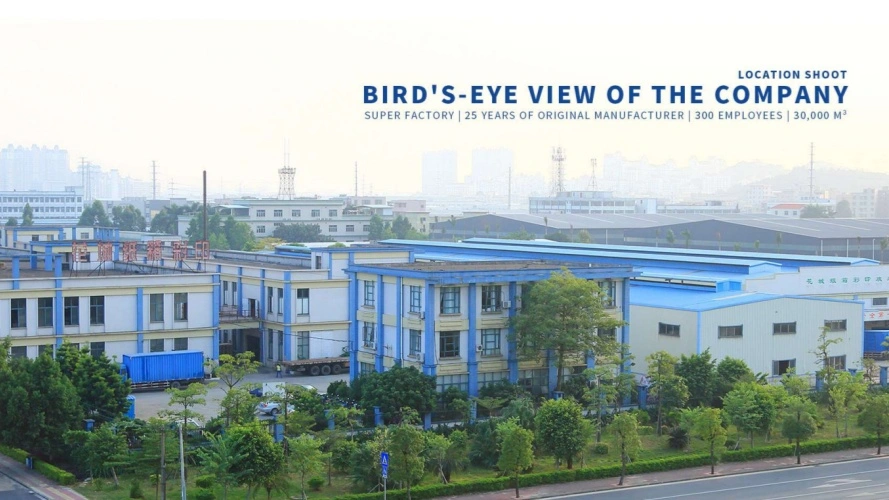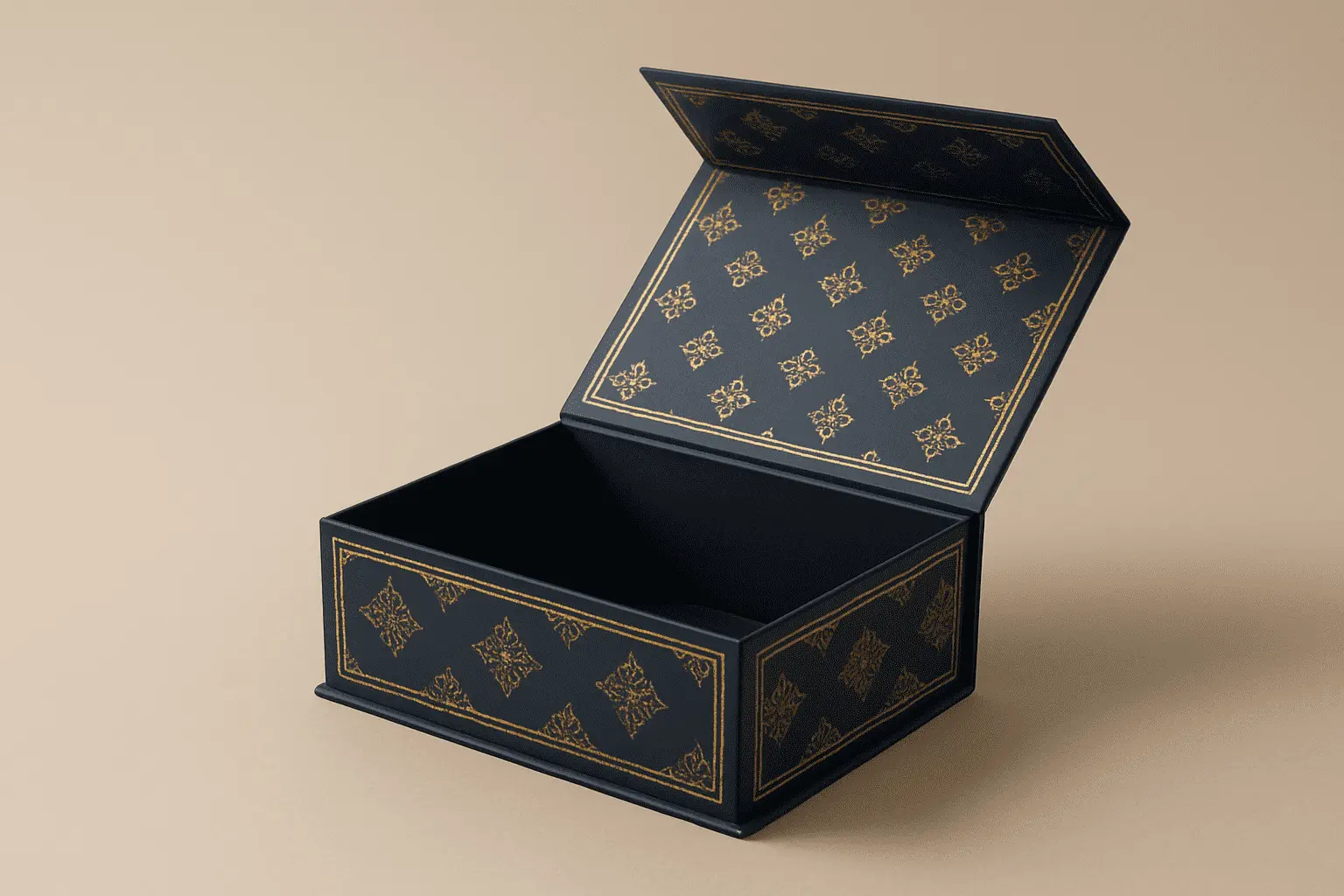7 Types of Folding Carton Packaging: Materials & Benefits
In today's competitive marketplace, selecting the right packaging solution can make or break your product's success. Folding carton packaging has emerged as one of the most versatile and cost-effective solutions for businesses across various industries. From protecting delicate electronics to showcasing premium cosmetics, the seven primary types of folding carton packaging offer unique advantages that cater to specific product requirements. Understanding the materials and benefits of each type is crucial for making informed packaging decisions that enhance brand visibility while ensuring product integrity. Among these packaging solutions, collapsible rigid boxes stand out for their exceptional strength, versatility, and environmental sustainability, making them a preferred choice for manufacturers worldwide seeking reliable packaging that delivers both functionality and aesthetic appeal.

Understanding the Core Types of Folding Carton Packaging
The packaging industry recognizes seven fundamental types of folding carton packaging, each engineered to meet specific product protection and presentation needs. Tuck-end boxes represent the most common folding carton style, featuring interlocking tabs that create secure closures without requiring adhesives. These versatile containers excel in retail environments where quick assembly and attractive shelf presentation are paramount. Collapsible rigid boxes within this category offer enhanced durability through their multi-layer construction, providing superior protection for products during shipping and storage. Lock-bottom boxes constitute another essential category, featuring automatically locking bottoms that eliminate the need for tape or glue during assembly. This design significantly reduces packaging time in high-volume production environments while ensuring consistent box integrity. The corrugated variants of these boxes incorporate fluted layers that provide exceptional crushing resistance, making them ideal for heavy or fragile items that require maximum protection during distribution. Straight tuck-end boxes offer symmetrical design advantages where both top and bottom flaps fold in the same direction, creating clean lines and professional appearance. When manufactured using corrugated materials, these boxes combine aesthetic appeal with structural strength, particularly beneficial for premium product lines where packaging quality reflects product value. The corrugated construction enhances the box's ability to maintain its shape under various environmental conditions, ensuring consistent brand presentation from warehouse to consumer.
Material Innovations in Modern Folding Carton Construction
Contemporary folding carton packaging leverages advanced material technologies to deliver superior performance characteristics. Traditional paperboard remains fundamental, but modern collapsible rigid boxes incorporate sophisticated engineering that optimizes strength-to-weight ratios. The corrugated structure consists of a fluted inner layer sandwiched between smooth outer layers, creating exceptional compression strength while maintaining lightweight properties essential for cost-effective shipping. FSC-certified materials have revolutionized the sustainability aspect of folding carton packaging, ensuring that raw materials originate from responsibly managed forests. This certification particularly benefits collapsible rigid boxes manufacturers who prioritize environmental responsibility without compromising structural integrity. The certification process guarantees that the entire supply chain meets strict environmental and social standards, providing end-users with packaging solutions that align with corporate sustainability goals. Surface treatment innovations have expanded the functional capabilities of folding cartons significantly. Cold and hot foil stamping techniques create premium visual effects that elevate product presentation, while UV coating applications provide enhanced durability and moisture resistance. Collapsible rigid boxes can incorporate these advanced surface treatments to achieve luxury packaging aesthetics previously associated only with rigid box constructions. Embossing and debossing techniques add tactile dimensions that engage consumers and create memorable unboxing experiences, particularly valuable for brands seeking to differentiate themselves in crowded marketplaces.
Structural Engineering Benefits of Advanced Folding Cartons
The engineering principles behind modern folding carton design focus on optimizing structural performance while maintaining material efficiency. Collapsible rigid boxes exemplify this approach through their multi-directional strength characteristics that resist compression, puncture, and edge crush forces. The fluted construction distributes load forces across the entire structure, preventing localized failures that could compromise product protection. Stackability represents a crucial engineering consideration in folding carton design, particularly for retail and warehouse environments. Advanced corrugated constructions incorporate compression strength calculations that ensure boxes maintain their structural integrity when stacked multiple layers high. This capability reduces storage space requirements and transportation costs while maintaining product safety throughout the distribution chain. Collapsible rigid boxes engineered for optimal stackability can support significantly more weight than their solid paperboard counterparts, making them essential for high-density storage applications. The precision folding characteristics of modern carton designs enable automated packaging processes that increase production efficiency while reducing labor costs. Computer-controlled die-cutting processes ensure consistent fold lines and perfect dimensional accuracy, allowing collapsible rigid boxes to integrate seamlessly with high-speed packaging equipment. This precision manufacturing approach eliminates the variability that can cause jamming or misalignment in automated systems, ensuring smooth production operations and consistent package quality.
Industry-Specific Applications and Performance Requirements
Different industries impose unique requirements on folding carton packaging that influence material selection and structural design choices. The food industry demands packaging solutions that provide barrier properties against moisture, oxygen, and contaminants while maintaining food safety standards. Collapsible rigid boxes designed for food applications incorporate food-grade coatings and inks that prevent migration of harmful substances while providing adequate protection during transportation and storage. Cosmetics and personal care products require packaging that combines protective functionality with premium aesthetic appeal. The corrugated construction provides excellent protection for glass containers and delicate formulations while supporting sophisticated printing and finishing techniques. Collapsible rigid boxes in this sector often feature multiple compartments and custom inserts that secure products in precise positions, preventing damage from movement during shipping while creating impressive unboxing experiences that reinforce brand luxury positioning. Electronics packaging presents unique challenges related to static protection, shock absorption, and precise dimensional requirements. Advanced corrugated designs incorporate anti-static treatments and cushioning properties that protect sensitive electronic components from electromagnetic interference and physical damage. Collapsible rigid boxes engineered for electronics applications often feature custom-molded inserts and specialized coatings that provide comprehensive protection while maintaining the clean, technical aesthetic that electronics consumers expect.
Environmental Sustainability and Circular Economy Integration
The environmental impact of packaging decisions has become increasingly important for businesses seeking to reduce their carbon footprint and meet consumer sustainability expectations. Collapsible rigid boxes offer significant environmental advantages through their high recycled content and excellent recyclability at end-of-life. The manufacturing process for corrugated materials typically incorporates 70-90% recycled fiber content, dramatically reducing the demand for virgin materials while maintaining structural performance. Biodegradability represents another crucial environmental benefit of folding carton packaging. Unlike plastic alternatives that persist in the environment for decades, collapsible rigid boxes decompose naturally within months when exposed to standard environmental conditions. This characteristic makes them particularly valuable for businesses implementing circular economy principles where packaging materials return to natural cycles without long-term environmental impact. The carbon footprint of corrugated packaging production has decreased significantly through improved manufacturing processes and renewable energy adoption. Modern production facilities utilize combined heat and power systems that capture waste energy from the corrugating process, reducing overall energy consumption. Collapsible rigid boxes manufactured using these advanced processes can achieve carbon neutrality or even carbon negativity when considering the carbon sequestration properties of the wood fiber raw materials.
Customization Capabilities and Brand Enhancement Opportunities
Modern folding carton packaging offers extensive customization possibilities that enable brands to create distinctive packaging experiences. Collapsible rigid boxes can incorporate complex die-cut patterns, multiple color printing, and specialized finishing techniques that transform functional packaging into powerful marketing tools. The structural versatility of corrugated construction allows for innovative opening mechanisms, display features, and interactive elements that engage consumers and encourage brand loyalty. Digital printing technologies have revolutionized the customization potential of folding cartons by enabling short-run productions with variable data printing capabilities. This advancement allows brands to create personalized packaging experiences, seasonal variations, and limited edition designs without the high setup costs traditionally associated with custom packaging. Collapsible rigid boxes benefit particularly from digital printing capabilities, as the corrugated surface provides excellent ink adhesion and color reproduction that rivals traditional offset printing quality. Three-dimensional design capabilities enable the creation of complex packaging structures that serve multiple functions beyond basic product containment. Advanced corrugated engineering can integrate display stands, dispensing mechanisms, and storage solutions into single package designs. Collapsible rigid boxes engineered with these multi-functional capabilities provide added value to consumers while reducing packaging waste through consolidated functionality that eliminates the need for separate display or storage components.
Conclusion
The seven types of folding carton packaging represent a sophisticated array of solutions that address diverse industrial requirements while supporting environmental sustainability goals. Collapsible rigid boxes stand out as particularly versatile options that combine structural strength, customization flexibility, and environmental responsibility. The continuous innovation in materials science and manufacturing processes ensures that folding carton packaging will continue evolving to meet the changing demands of global commerce while supporting brands in creating memorable consumer experiences that drive business success.
Ready to elevate your packaging solution? With over 20 years of experience, 300+ skilled employees, and a 35,000 m² manufacturing facility, Guangzhou Fetching Color Printing & Packaging Ltd. has served over 1,000 loyal customers worldwide. Our advanced machinery including KBA106-(9+1) UV printing machines and state-of-the-art corrugated production lines ensure premium quality packaging solutions tailored to your specific needs. From concept to delivery in just 15-20 days, we offer free 3D mock-ups, customization starting from 1000 pieces, and comprehensive after-sales support. Contact us today at public@fetchingprinting.com to discover how our expert team can transform your packaging vision into reality and help your brand stand out in the competitive marketplace.
References
1. Johnson, M.R. & Thompson, K.L. (2023). "Advanced Corrugated Packaging Technologies: Structural Engineering and Performance Optimization." Journal of Packaging Science and Technology, 45(3), 78-92.
2. Chen, W.H., Anderson, P.J. & Williams, S.D. (2022). "Sustainable Folding Carton Design: Environmental Impact Assessment and Circular Economy Integration." International Packaging Research Quarterly, 38(2), 156-171.
3. Rodriguez, A.M., Kumar, V.S. & Brown, L.E. (2023). "Material Innovations in Corrugated Carton Manufacturing: From Traditional Methods to Industry 4.0 Applications." Packaging Engineering Review, 29(4), 203-218.
4. Davis, R.K., Liu, X.Y. & Martinez, C.P. (2022). "Industry-Specific Packaging Requirements: Comparative Analysis of Folding Carton Applications Across Food, Cosmetics, and Electronics Sectors." Applied Packaging Technology, 51(6), 445-462.

Based on your location and order quantity, you will have the opportunity to receive a limited time free shipping promotion!

Corporate Purpose
